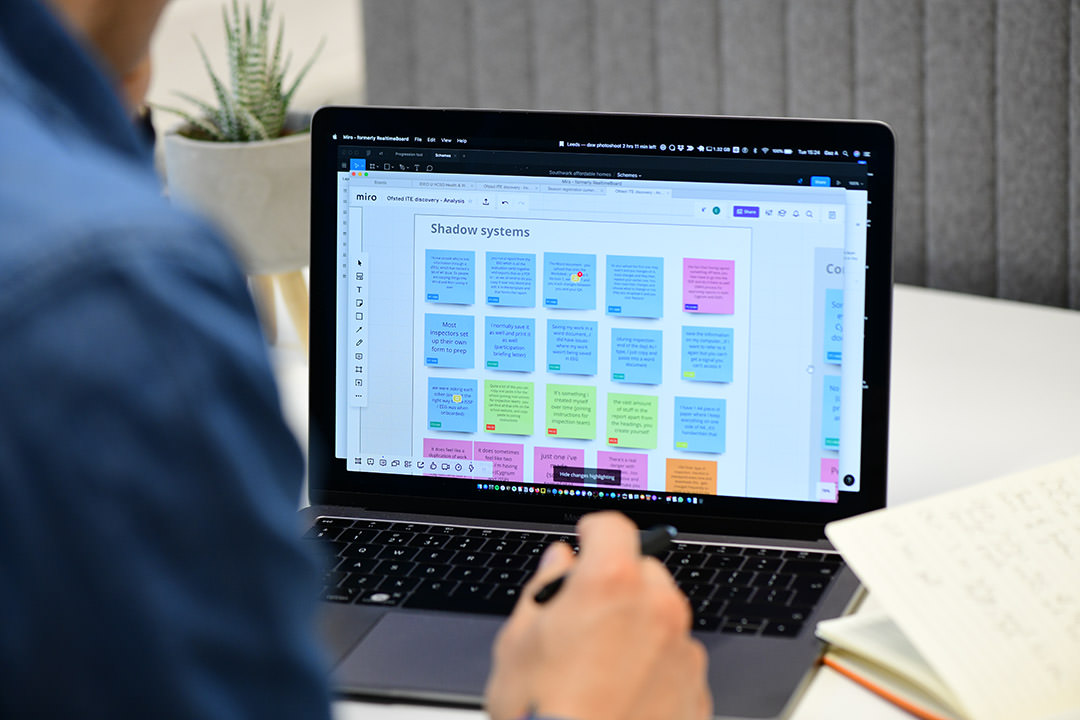Doing a remote service assessment

The more prep you can put in, the better you’ll feel heading into your assessment
The Service Standard is designed to help teams create high quality services that work for people. It’s a useful tool that helps you think about the important things on a project, and avoid common pitfalls.
Taking your service through an assessment is an important part of this process. It’s essentially a peer review, that helps focus teams on the principles set out in the Standard. It’s common for assessors to tell you an assessment is designed to help you build a great service. They’re not a trap that’s designed to catch you out or slow you down.
But it’s also true that an assessment can be a daunting prospect for teams. Scrutiny from others on your work doesn’t always feel comfortable. Like any kind of test, you want to make sure that you show off your work in the best possible light. In an ideal world, you’ll always be able to reach an assessment under the best possible circumstances, when your team has fully hit its stride.
Lockdown forced us all to be remote
We were preparing for our service assessment for the Report Official Development Assistance project, just as Covid-19 sent us all into lockdown.
In hindsight, we made a fairly seamless switch to remote working as we were already set up well to work this way. We were used to running meetings via video call, and we were comfortable using virtual whiteboard tools like Miro. We were lucky that the team was well established, and in some ways things improved under lockdown. Having the full team remote puts everyone on the same footing, rather than having a small group dialled in trying to follow the discussion of their colleagues in a room.
But my initial reaction was to question how we would manage to do a good assessment. They’re typically a face to face affair which wouldn’t be possible. And as people across government were suddenly pulled onto emergency projects, would we even be able to put a panel together? And if we did, how would a 4 hour session work over a video call? How would we run a demo remotely? What would the impact be on the project if we couldn’t do the assessment?
In the grand scheme of things, these were relatively small things to worry about. But they were important for the project.
Getting ready for a remote assessment
First of all, credit to our colleagues from the Department for Business, Energy, and Industrial Strategy (BEIS) for being so quick to set up a remote assessment for us. Within a few days of going into lockdown, we had a panel and a date.
It was now down to us to get ready. In many ways, our approach was no different than preparing for a face to face assessment. The more prep you can put in, the better you’ll feel heading into your assessment.
Below are a handful of things that made it easier for us on this project.
Give yourselves time to prepare and practice
This doesn’t especially apply to a remote assessment, but set aside plenty of time to practice telling the story of your service and the work you’ve done. Rehearsing in front of a mock panel really helped us become more confident at running a live demo remotely. Getting feedback helped us get the level of detail right, and boosted our confidence.
Breaking the actual assessment down into two halves
Face to face assessments often take up a big block of time with a small break in the middle. This didn’t feel realistic over a video call, which can feel more fatiguing than face to face. We were very grateful to our assessors for being so accommodating on this.
Test the technology
Our panel chose Microsoft Teams for the assessment, which was new to us. We started using it in our own meetings, just to get more confident with a different product. It didn’t take long to get used to different layouts and sound quality, which gave us one less thing to worry about on the day.
Give everyone the opportunity to present
More things can probably go wrong with a remote assessment, as people have to deal with their home wifi, their kids, or even their doorbells. And with a pandemic unfolding, there was always the risk that members of the team would fall ill. Every member of the team knew our presentation, and we had our main talking points written down. This reduced the risk of a single point of failure on the day.
Embrace the inspectors
It’s maybe inevitable that we often see Service Assessments as a hurdle or a gate – something to be overcome. Digital assurance folks frequently tell you not to think about it in that way, and they’re right. They’re designed to help teams build good services. If you don’t meet the standard for whatever reason then this is extremely valuable feedback that can help you make your service better. Thinking of it as an opportunity to talk about what we’d been doing – to learn how to make it better – helped take a lot of the anxiety out of the process (for me at least). I recommend watching this video on how happier teams have better results.
A boost to our confidence
In the end, our service met every point on the assessment, which was a great outcome and a real boost to the team. If we had postponed the assessment because of Covid-19, we wouldn’t have had this validation from people outside the team. Amid the uncertainty that the pandemic has brought, that confidence boost has been priceless.